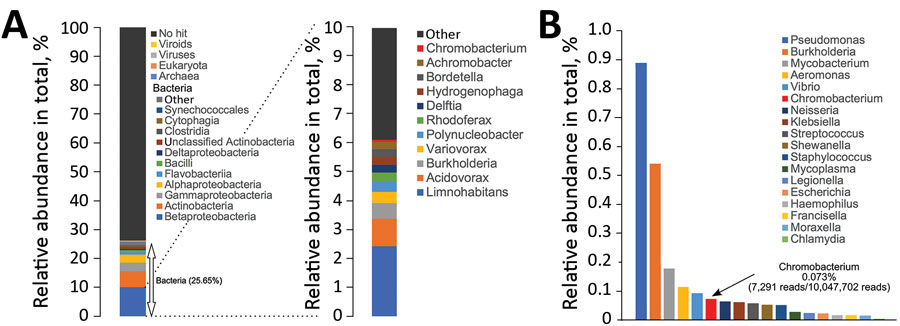Volume 26, Number 9—September 2020
Dispatch
Chromobacterium haemolyticum Pneumonia Associated with Near-Drowning and River Water, Japan
Figure 2

Figure 2. Metagenomic analysis of river water sample collected from the site of near-drowning of a patient with Chromobacterium haemolyticum pneumonia, Japan. A) Relative abundance of superkingdom, class of bacteria, and genus of betaproteobacteria in river water sample. The relative abundance of bacteria is 25.65%; the 10 most observed class and genus are summarized in cumulative bar charts. B) Comparison of relative abundance of bacteria causing pneumonia associated with drowning in genus level in the river water sample. The relative abundance of Chromobacterium, a Betaproteobacteria, is 0.073%.
Page created: July 06, 2020
Page updated: August 19, 2020
Page reviewed: August 19, 2020
The conclusions, findings, and opinions expressed by authors contributing to this journal do not necessarily reflect the official position of the U.S. Department of Health and Human Services, the Public Health Service, the Centers for Disease Control and Prevention, or the authors' affiliated institutions. Use of trade names is for identification only and does not imply endorsement by any of the groups named above.